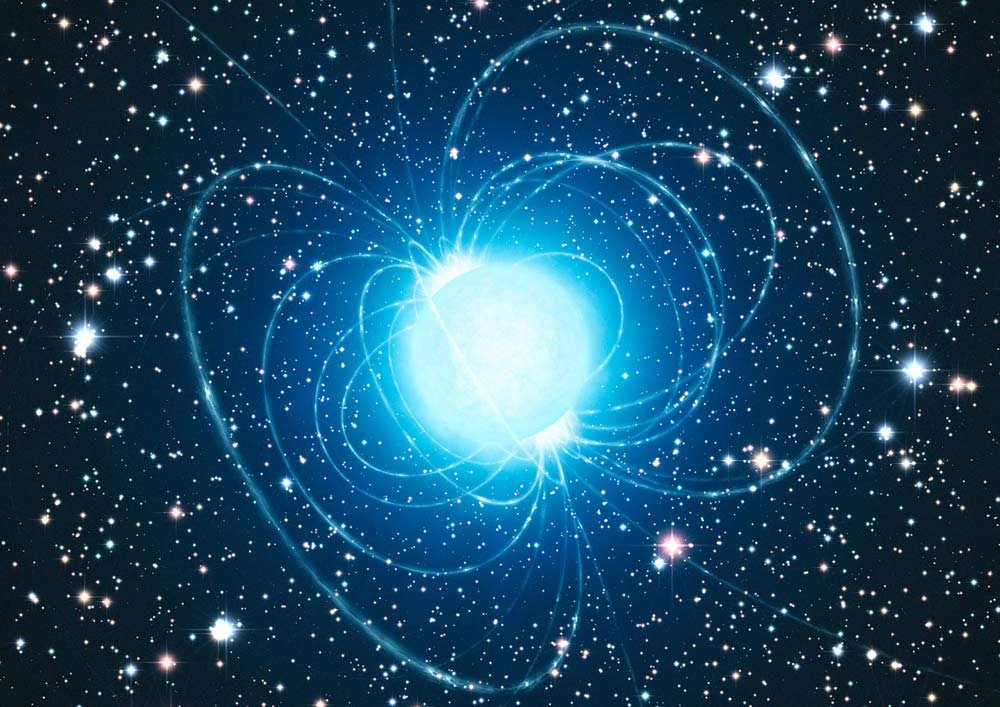The Universe is packed full of wonders. This includes different types of stars, galaxies, planets, black holes and many more that we do not know about as of yet. In this post I will talk about Neutron Stars, and will hopefully explain the damage they are capable of doing.

First we must understand what happens when stars start to die.
The star is roughly the same size as the sun:
If the core runs out of Hydrogen, it begins to die. Its core begins to contract because of its gravity which generates immense amounts of heat. This heat causes the expansion of the star's upper layers. The star is now known as a red giant. Eventually the core will get so hot it starts to fuse helium into carbon. When the helium fuel runs out, the core begins to expand and cool. Then the upper layers will expand and eject material causing a planetary nebula. The core then cools into a white dwarf then sooner or later a black dwarf. This process takes a few billion years.The star is more massive than the sun:
The same happens as above but instead of the helium fuel running out, the core gets so hot that the mass is enough to fuse carbon into heavier elements such as neon - silicon - magnesium - sulfur - iron. It can now burn no longer. The star collapses by its own gravity and the iron core heats up. The core becomes so tightly packed that protons and electrons interact and form neutrons. The core which is roughly the size of the Earth, shrinks to a neutron core with the radius of roughly 10 kilometers. The outer layers of this star fall inward onto this core which crushes the core even more. This core is now incredibly packed full of energy and heat. In fact it is so hot it heats to billions of degrees and explodes! This forms a supernova, and the core can then form a neutron star or a black hole.

Figure 1: This is an image of a supernova, which is what happens when a massive star dies and its core explodes.
Now that we know how different stars die; how are Neutron stars formed?
Imagine a star which is 4-8 times more massive than our sun approaching the end of its lifetime. This means process number (2) explained above, occurs. When the core explodes and forms a supernova, it leaves behind a neutron rich core that continues to collapse. This causes protons and electrons to further interact to make more neutrons, making the core even more neutron rich. Hence the name; Neutron star.
What are the properties of Neutron stars?
- They are shockingly small. Its radius is 10 kilometers which is the same length as a small city. If you were to roll up the distance from Manchester to London into a sphere, that is the size of a Neutron star. Incredible.
- They are incredibly dense. In fact so dense, that a teaspoon of neutron star would weigh a whopping 1 billion tons.
- Due to conservation of angular momentum, explained here (at point number 3 on the article), the star spins as fast as 43,000 times per minute!
- They have a big gravitational force. Since all the particles in a neutron star are pulled together as tightly as possible, it has an immense mass meaning it must have an incredibly large gravitational pull. To escape a Neutron star, you would need to travel at 160,000 kilometers every single second. Compare that to escaping the gravity of the Earth; you would need to travel at 11.2 kilometers every second.
Now we know they are deadly. What is this Neutron star capable of doing? What if one of these stars entered our solar system? To answer this I am going to leave you with this great video which will show you a well put together simulation that is definitely worth watching.
Neutron star vs. Earth:
Please do check out my other posts as some may interest you!
Until next time, take care. Mystifact
